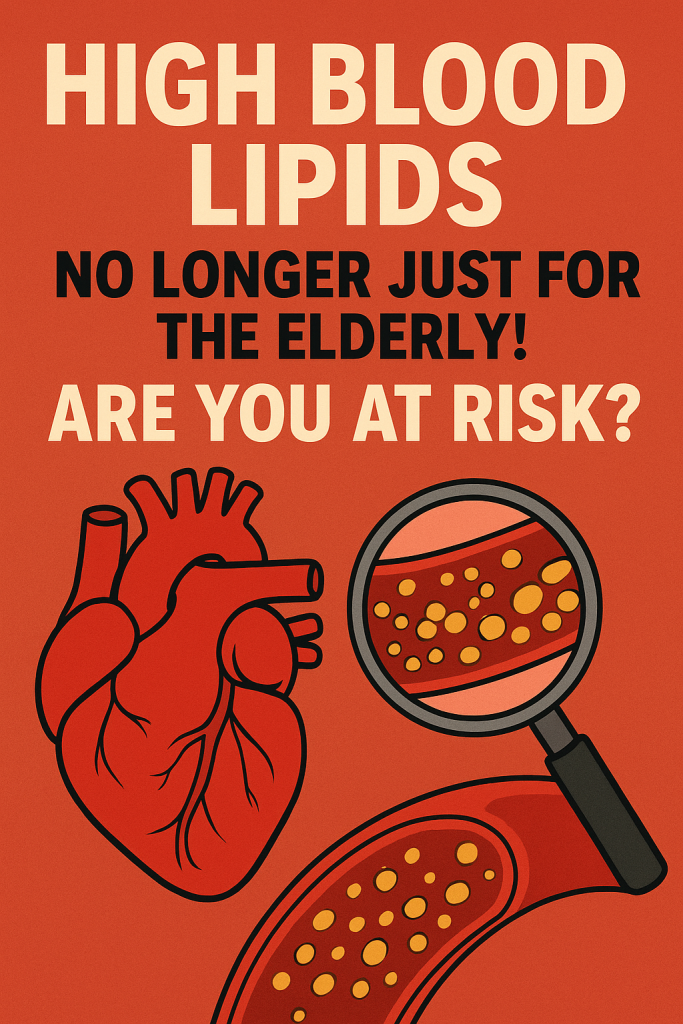
Opening a health checkup report is becoming increasingly stressful for young adults. More and more people in their 20s are finding “red flags” next to key indicators like Total Cholesterol and Triglycerides. It’s confusing: you’re young, you have a standard BMI, and no beer belly—so why are your blood lipids high?
A Dangerous Shift: The “Youthification” of Hyperlipidemia
High blood lipids (Hyperlipidemia) were once considered a condition exclusive to those aged 50–69. However, according to the 2023 Guidelines for the Management of Blood Lipids in China, the prevalence of dyslipidemia among residents over 18 has reached a staggering 35.6%. Furthermore, the 2025 National Health Report indicates that approximately 256.7 million people aged 30–79 are affected.
The trend is alarming: nearly 20% of people under 30 now suffer from this condition. Despite this, awareness remains dangerously low. Among those over 35, only 16.1% are aware of their condition. Because high blood lipids are a “silent killer” with no obvious early symptoms, over 80% of patients fail to notice anything is wrong until a blood test reveals it—or worse, until complications like heart disease or stroke occur.
Why is this happening? (It’s not just diet)
High blood lipids are rarely caused by a single factor. They are a result of a complex mix of genetics, lifestyle, and medical history:
- Genetics: If you have a family history, your risk significantly increases due to gene-determined lipid metabolism issues.
- Medical Conditions & Meds: Diabetes, liver/kidney diseases, and thyroid issues can trigger high lipids. Long-term use of steroids or diuretics is also a risk factor.
- Age & Gender: Women over 50 face increased risk due to dropping estrogen levels.
- Modern Lifestyle: Frequent takeout, high-fat fast food, sedentary jobs, and the vicious cycle of metabolic disorders are silently pushing lipid levels up.
The Hidden Dangers
It’s not just about “thick blood.” It is a metabolic disorder that leads to atherosclerosis (hardening of the arteries). The 2024 Guidelines for Prevention and Treatment of Dyslipidemia in Adults warn that oxidized LDL cholesterol forms plaque in blood vessels. If this plaque ruptures, it causes thrombosis, increasing the risk of heart attack by 3.2 times and stroke by 2.8 times.
It can also lead to fatty liver, diabetes, pancreatitis, and gallstones. Watch out for subtle signals like dizziness, numbness, chest tightness, or blurred vision.
Prevention & The BISPIT Solution
The key is “Early Prevention, Early Detection, Early Intervention.” Reducing takeout, moving more, and breaking the cycle of metabolic strain are essential steps.
For those seeking a more systematic approach to complement a healthy lifestyle, BISPIT Lipid-Lowering Tablets offer a solution rooted in modern pharmacology and traditional wisdom.
Why BISPIT?
- Natural Formula: Scientifically formulated with over 10 natural ingredients, including Natto, Red Yeast Rice, Mulberry Leaf, Sea Buckthorn, and Goji Berry.
- Multi-Target Action: It works to inhibit cholesterol synthesis, promote lipid metabolism, and provide antioxidant and anti-inflammatory benefits.
- Comprehensive Care: It not only lowers Total Cholesterol, LDL, and Triglycerides but also helps repair vascular function.
Safe, gentle, and suitable for long-term use, BISPIT is designed for those with dyslipidemia or high cardiovascular risk. Prevention is better than cure—start protecting your heart health today.
